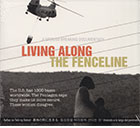
Living Along the Fenceline 2011
Distributed by Third World Newsreel, 545 Eighth Avenue, Suite 550, New York, NY 10018; 212-947-9277
Produced by Lina Hoshino, Gwyn Kirk, Deborah Lee
Directed by Lina Hoshino and Gwyn Kirk
DVD, color, 65 min.
High School - General Adult
Military, Women’s Studies
Date Entered: 05/05/2016
Reviewed by Mary Northrup, Metropolitan Community College-Maple Woods, Kansas City, MissouriThrough the voices of women who have been affected by the presence of military bases in their countries, viewers experience what happens in communities that have high levels of U.S. military living among them. By becoming activists, these women seek to improve their communities in a variety of ways.
The scenes show real life, not the touristy pretty places, but the reality – sometimes gritty and disturbing – and accurate portrayals of how people live and work as they find ways to heal their fellow citizens. Most of the photography consists of the women going about their work, with voiceover by the women themselves, and sometimes speaking directly to the camera. English subtitles appear when Spanish, Filipino, Japanese, or Korean is spoken.
These women live and work in San Antonio, Texas; Vieques, Puerto Rico; Olongapo, Philippines; Okinawa, Japan; Seoul, South Korea; Guam; and Hawaii. Through their activism, they work to reverse or stop the damage to the environment, health effects of pollution, weapons, prostitution and rape, discrimination, and increased military presence.
A narrator brings all the stories together at the beginning and end and seamlessly segues from one section/country to another. Each segment is introduced by a graphic where an American flag is planted on a map of the country. Viewers may be shocked at the statistics that are provided. These seven stories represent just a few of the hundreds around the world where military bases are located. Becoming aware of the long-term effects of having military in one’s town may be the best message of this film, and may inspire viewers to learn more and become activists themselves.
Several stories involve rape and prostitution, happening in areas with large numbers of military men, clubs, and bars. Teachers will want to judge the maturity level and sensibilities of their students before using this film in classes. That said, this powerful film tells it like it is and would be a good choice for a film discussion group, college classes in women’s studies and sociology, or any group interested in activism, women’s issues, and the influence of the United States on foreign countries.
Bottom line: this is not an easy film to watch, considering the sad stories that are told, but the attitudes of the women who are helping to change the situations are uplifting and give viewers hope for the future.